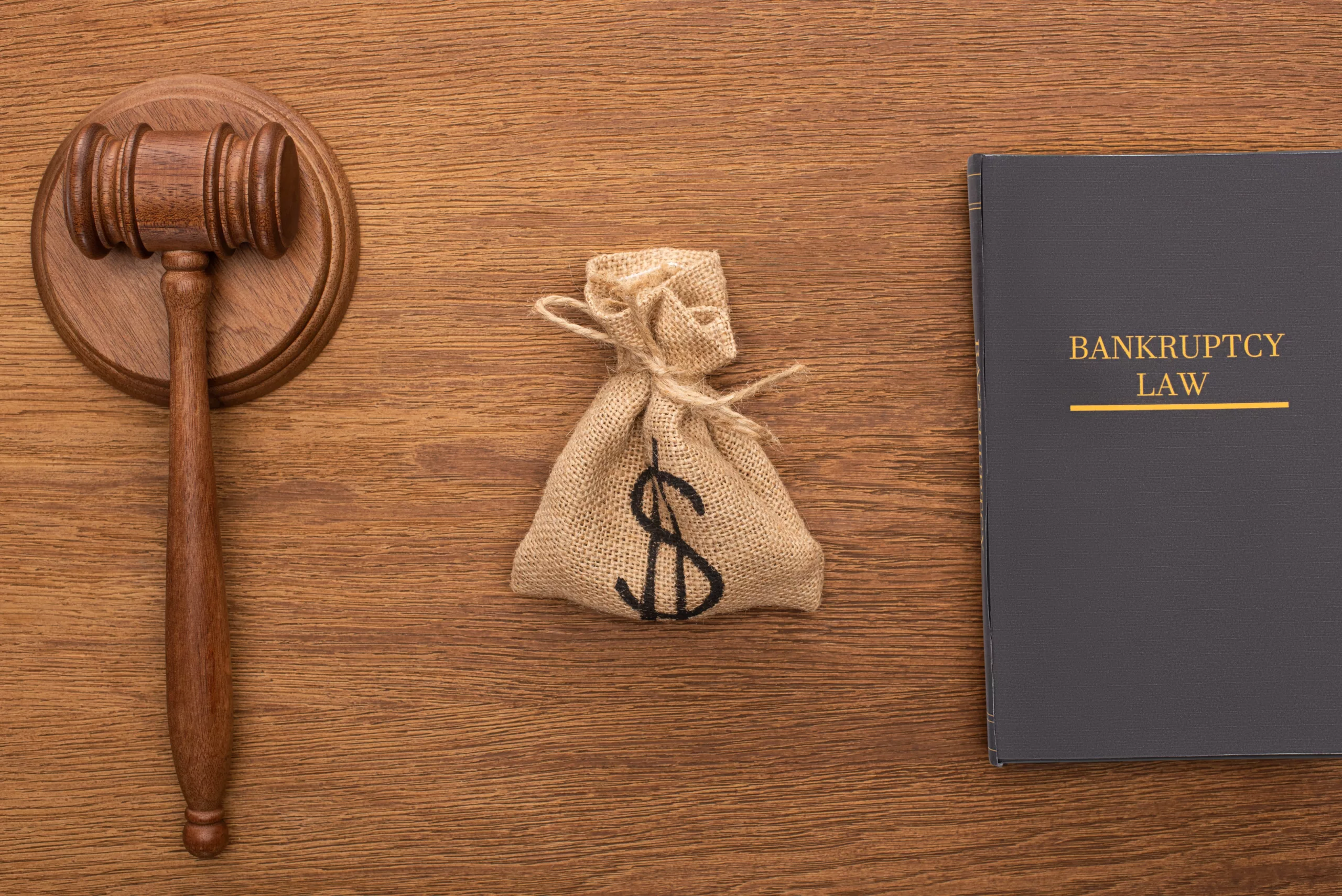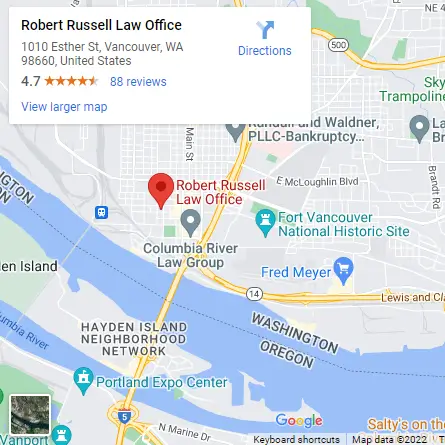A Creditor With A Judgment May Have a Lien Against Your Home
Do you know what a property lien is? If at the time you file bankruptcy you own real property such as a house or a bare land lot, the first thing you need to know is that it is possible for a creditor with a judgment (when you file bankruptcy) to have a lien on the real property.
That means that if you file a bankruptcy and receive a discharge of that debt, the lien remains attached to the house! (Note: Real property you acquire after filing will not be liened by a prior judgment discharged in bankruptcy.)
If you keep the house and do nothing, then the lien remains attached to the house. You will have to pay/settle the debt if/when you sell or refinance the house. Also, there are situations when the creditor can actually foreclose on your house to get paid on the debt.
What Are Your Options In Dealing With a Judgment Lien?
Do not despair. You do have some options to deal with the judgment lien.
First, if you don’t want to keep the house, then you don’t have to do anything. When the house is foreclosed on by the mortgage company, the lien goes with it (and they cannot come after you because you received a discharge in the bankruptcy).
If you want to keep your house, then there is good news. The Bankruptcy Code allows a debtor to ‘disconnect’ or remove a judgment lien against a debtor’s home to the extent that it impairs an exemption to which the debtor would have been entitled in the absence of the lien. What this effectively means is that if the debtor does not have more equity in the home that can be exempted in the bankruptcy from the claims of creditors, then the debtor can have the court enter an order that removes the lien.
Here is are two examples:
Example 1: The house is worth $200K. The first mortgage debt is $150K. That means there is $50K equity in the house. The judgment lien is for $110K. This debtor lives in Washington State and chose the Washington homestead exemption of $125K. Because the debtor can easily exempt the $50K equity in his home (and could do so up to $125K), and the $110K judgment lien “impairs” (eats into) the exempt equity, the debtor can disconnect/remove the judgment lien from the home.
Example 2: The house is worth $325K. The first mortgage debt is $150K. That means there is $175K equity in the house. The judgment lien is for $110K. This debtor lives in Washington State and chose the Washington homestead exemption of $125K. Because the debtor can exempt only $125K of the $175K equity, there is $50K in equity for the judgment to attach. As a result, the debtor can disconnect/remove the lien on the first $125K of equity, but the creditor gets to keep a $50K judgment lien on the home. The other $60K of the judgment lien is removed/disconnected.
What is the Procedure to Remove A Judgment Lien?
The process to remove a judgment lien is fairly straightforward. Basically, the debtor needs to file the motion with the court, give notice to the creditor, and at the hearing ask the court to enter an order. This needs to be done while the bankruptcy is still “open.” So, typically, a motion to avoid a judgment lien is filed before the Discharge Order is entered (60 days after the 341 meeting) because most cases “close” shortly after entry of the Discharge Order. There is usually an additional fee for such services.
What Happens If Your Case Closes And The Judgment Lien Was Not Removed?
Many times a debtor did not know that a judgment had been entered or that it was a lien against their home until after the bankruptcy is complete/closed. A debtor often finds out about the lien during a refinance or a sale of their home.
The good news is that it is not too late to remove the lien.
The debtor has to file a motion to reopen the bankruptcy case. That may take a week and will require at least a $260 filing fee be paid. Then the motion to avoid/remove the judgment lien is filed. Regardless of when the motion is filed, it’s the value of the home on the date of filing of the bankruptcy that matters.
Sometimes a debtor is in a hurry to refinance or sell. That can be a problem. Normally, a motion to avoid a judgment lien must be scheduled at least 30 days in the future after the motion is filed. If you have a true emergency, then the motion can often be scheduled to be heard sooner.
“My Attorney Should Have Filed The Motion When My Case Was Open.”
A judgment lien is only valid against real property in the county in which the judgment was taken or recorded. So, prior to filing, a debtor should go to the local county court (or check online or both) and see if they have any judgments against them. Your attorney can do this as well. However, if there is a judgment against a person with your same name, the attorney has no idea if that judgment is against you or another person with your same name. So, the debtor client always needs to confirm if they have any judgments against them. In theory, the debtor should know if they have at least been sued.
Sometimes, the lien was known at the time, but the debtor did not want to spend the money at the time on a house they were not sure they were not going to keep or they just did not have the money at the time to deal with the issue. This happened quite often. Speaking of which …
Your Previously “Underwater” House Has Increased In Value
It is also worth noting the impact of the recovery of the housing market and home values. After the 2008 real estate “crisis”, home values decreased significantly. At that time, many debtor’s homes were “underwater” and had negative equity (they owed more on it than it was worth). Many debtors were not sure if they wanted to keep their “underwater” house.
As a result, many debtors elected to not have a motion to avoid a judgment lien filed because such a motion normally costs extra and the cash-strapped debtor did not want to pay the fees to have a motion filed to get rid of a judgment on a house that they were not even sure they were going to keep.
Now, with home values increasing, debtors/clients are returning and asking for judgment liens to be removed. As noted above, that can be done; you just reopen the case and file the motion as usual. Normally, the attorney fees to file the motion to avoid the lien is the same now as it would have been back when the case was still open. However, the debtor has to pay the filing fee and any attorney fees associated with the motion to reopen.
What If The Creditor Objects To Lien Removal?
Judgment liens are fairly easy to avoid provided you can show that a judgment really does impair an available exemption. However, sometimes, a creditor will object to the motion and argue that a debtor’s home is worth more than the debtor asserts (and that the judgment does not impair / “eat into” the equity – see, Example 2, above). That is becoming more of a problem with increasing home values (but, remember, it the value on the date of filing that matters). With a contested matter, the court will take evidence from each party on the value and make a decision. If this is necessary, a debtor can expect that attorney fees will increase to deal with the now contested matter. Sometimes, it is cost-effective to settle with the creditor and avoid the costs and time delay.
Free Consultation
We offer a free initial consultation if you want to know if bankruptcy is the right option for you. Just let us know and we’ll see you soon.







